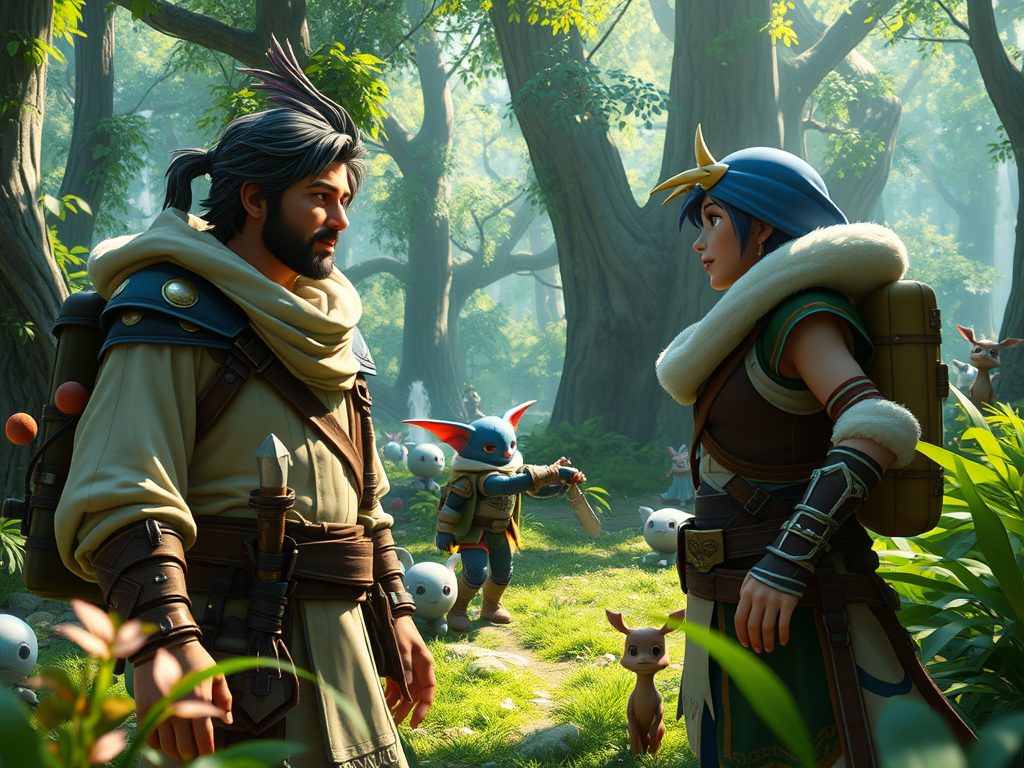Regarding virtual worlds, artificial intelligence (AI) combined with game development has changed how video games are made and played. While game developers look for new ways to engage their audiences, AI tools have surfaced as fundamental means of producing contnet. AI assists in generating NPC dialogues and designing player’s choice quests enabling engagement at levels never witnessed before. Indeed, AI technology is converting mundane gaming storylines into active narratives that affect players greatly. This paper examines the applications of artificial intelligence in game development with particular emphasis on AI powered NPC dialogue and quest generation. The aim is to help enthusiasts and developers understand the possibility of using AI for deeper storytelling and immersive gameplay.
The NPC dialogues represent an integral part of any game as they serve as a link between game mechanics and the storyline of the game. These dialogues serve much greater purpose than just being conduits of the story; they allow the players to bond with game characters. Well-crafted conversations can draw users deeper into the game enhancing their immersion further which makes the game worlds more alive, believable, and lively. Additionally, sophisticated systems of dialogues can aid in characterisation, and setting the general atmosphere of the game. With the continuous changes happening in gaming, NPC dialogues need to be more innovative and engaging at every stage of the player’s experience which gives room for AI to come into the scene and address the issue of dialogue construction intricacies.
The Importance of NPC Dialogues

The conversations that non-playable characters engage in are fundamental to improving the player’s immersion and maintaining the storyline of the game. They help establish a convincing game environment through the establishment of interactive features that respond to user action. The design of NPC dialogues enables players to engage with storylines more deeply, which enhances emotional involvement. Additionally, dialogues can further the story progression by exposing important narrative elements or steering users towards important decisions. Nevertheless, constructing interesting and logical dialogues can prove to be a daunting task for developers. The use of AI technology simplifies this process significantly.
- Enhances player engagement by fostering deeper connections.
- Creates a believable game world through dynamic interactions.
- Drives the narrative by revealing plot components and player choices.
How AI Generates NPC Dialogues

As an example, engaging and contextually appropriate NPC dialogues is an intricate task that requires the latest techniques in AI technology. Everything begins with Natural Language Processing (NLP), which is already widely used in many AI applications. NLP models allow AI to understand context, tone, and the emotions being conveyed during conversations. Moreover, machine learning algorithms adapt the dialogues depending on the player’s actions and contributions over time. Perhaps the most well known tools for such tasks is the GPT model which generates coherent and contextually appropriate outputs. These tools and technologies help developers create and program vibrant conversational experiences for their users.
From a different perspective, although having AI-generated dialogue saves an immense amount of time, keeping the players satisfied becomes increasingly difficult. Developers are faced with the task of ensuring continuity within the game’s story, and logic within the characters’ dialogues. When the constructed dialogue is out of context, it tends to shatter the player’s immersion; therefore, human interaction still remains completely necessary for finding the sweet spot. The advantages of using AI-generated dialogues outweigh the disadvantages, but they must be implemented with care.
| AI Technique | Description |
|---|---|
| Natural Language Processing (NLP) | Technology that enables understanding and generation of human language. |
| Machine Learning | Algorithms that improve dialogue generation based on player interactions. |
| Generative Pre-trained Transformer (GPT) | A model designed to produce coherent dialogues based on context. |
The Role of AI in Quest Generation
Now, let us know discuss quest generation, which is yet another captivating area for AI. Although quest design is fascinating, it is very resource-consuming because a quest designer has to go through multiple iterations to achieve the best possible level of engagement. However, with AI, developers can use complex algorithms to program quests that change dynamically based on player actions and decisions throughout the game. AI driven quests also provide developers the ability to create personalized and relevant experiences for each player, making the game more engaging, highly replayable and satisfying. Using AI in video games can change the entire narrative structure and how players view quests, whether or not they consider elements such as storyline or goals. An AI is capable of analyzing large amounts of information in order to create unique quests that are specific to a player’s choices and style of play. This dramatically boosts player’s their enjoyment and satisfaction.
- Adaptive quest design for personalized player experiences.
- Tailored quests based on behavioral analysis.
- Enhanced replayability through dynamic content generation.
Challenges and Limitations of AI in Game Development
While AI certainly has a lot of potential, its integration into game development comes wth a number of challenges. For one, managing quality within AI generated content is a problem that needs more focus. As AI tools are advancing and creating tons of data, the developers’ focus shifts towards maintaining the average quality standard. Another problem is controlling the level of randomness and narrative coherence; the game’s quests and dialogues have to be worthwhile in the context of the game’s plot. Besides, some aspects of ethics must be considered, especially their relevance related to use of AI in the story telling process. With the introduction of AI in content creation, developers have to determine the degree of damage that can be inflicted to the integrity of the game and the players themselves.
Conclusion
In tandem with providing AI functionality for game development, AI technologies offer automation for NPC quests and dialogue creation. With the integration of the AIs, the audience engagement level is expected to develop further as more entertaining and captivating games are made available. Although there are several challenges to face, there is no doubt that integrating AI technology to the game design processes can greatly increase the productivity level. The adoption of AI will greatly increase the gaming experience by truly making it rich with creativity and interactivity features, hence paving the way for new industry standards. The future holds amazing transformations in how narration is perceived in games and the incorporation of AI technologies definitely makes it much more promising.
Frequently Asked Questions
- What is AI in game development? AI in game development refers to the use of artificial intelligence technologies and algorithms to create more dynamic and responsive game environments, including NPC behavior, dialogue, and quest generation.
- How does AI generate NPC dialogues? AI generates NPC dialogues using Natural Language Processing (NLP) and machine learning techniques that allow it to understand and produce human-like responses based on contextual inputs.
- Can AI create quests for players? Yes, AI can create quests by analyzing player behavior, preferences, and interactions, resulting in tailored, dynamic quests that enhance gameplay.
- What are some challenges of using AI in games? Challenges include ensuring content quality, maintaining narrative coherence, and addressing ethical considerations regarding AI-generated content.
- What is the future of AI in game development? The future holds potential for improved AI frameworks, enhanced interaction capabilities, and increased accessibility for diverse audiences in gaming experiences.


